Given how far the latest phone cameras have come, it’s definitely possible to film sports with your phone. But if you’re looking to capture more professional-looking footage that can be published online, you’ll definitely want to explore other options.
Now for most of us common folk, buying a $50,000 Sony HDC-4300 camcorder and $25,000 broadcast zoom lens is simply out of the question. But then again, most of us aren’t responsible for broadcasting the next NFL Super Bowl or MLB World Series to millions of viewers.
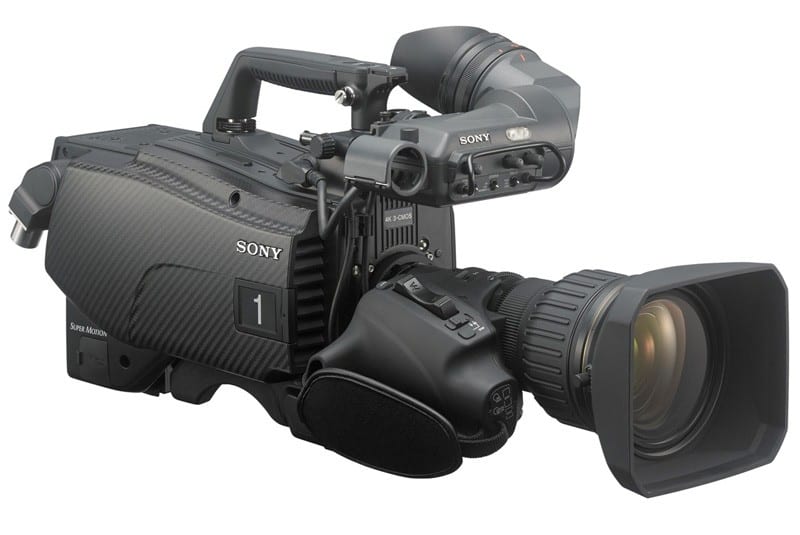
So where does that leave us?
Thanks to huge developments in camera technology as well as the explosion in amateur filmmaking and vlogging space, we’re actually very spoiled for choice. There are plenty of video cameras at every budget that can be used to record fast-paced sports scenes.
To help you find your perfect sports video camera, let’s first go through the various types of cameras to consider and then move on to our recommendations. And to finish things off, we’ll equip you with some extra buying tips to make sure you get the most out of your new camera.
Included In This Guide
Types of Video Camera
Video cameras come in all shapes and forms. Here are the most common ones that you’ll want to consider:
Your Smartphone
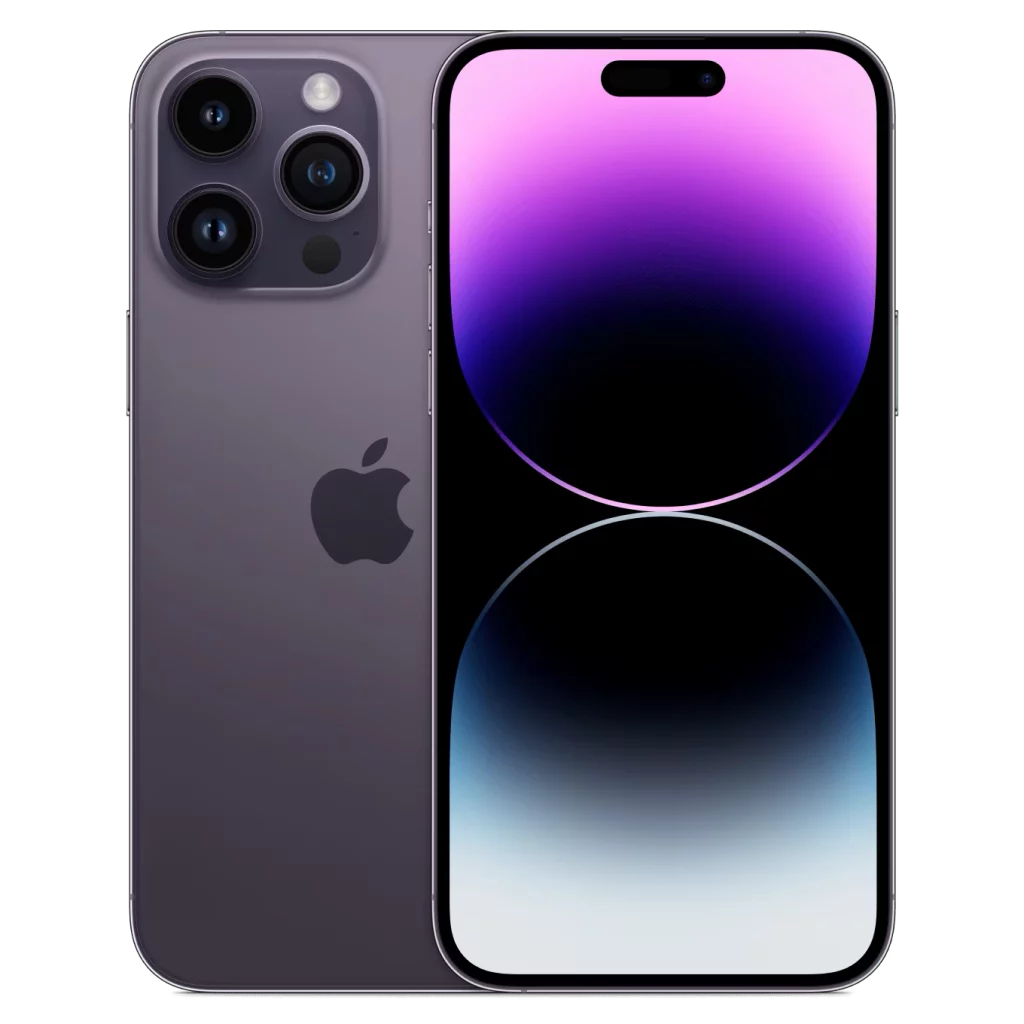
Flagship smartphones like the iPhone 14 Pro Max, Google Pixel 7 Pro, and Samsung S23 Ultra all boast incredible cameras which are really their main selling point these days. Photos and videos look brilliant meaning you don’t have to worry about bringing along all your camera gear.
FOR
- Fits in your pocket
- Good image quality and optical image stabilization on high-end phones
AGAINST
- Smaller sensors than mirrorless/DSLR cameras and professional camcorders
Recommended for: Casual recording for just about any sport
Consumer Camcorder
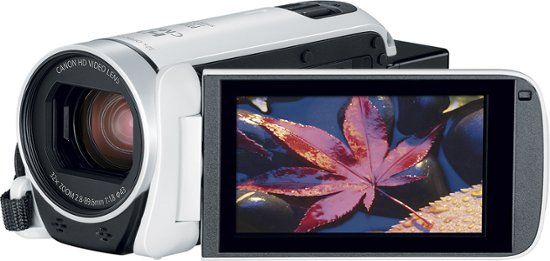
In its heyday, the camcorder was the camera of choice for recording key family moments and your kids batting in their little league games. With the advent of digital cameras and iPhones, budget camcorders are nowhere near as widespread as they once were. But they still have their strengths: they’re lightweight, easy to use and have high optical zoom capabilities for the price.
FOR
- Dead simple to use – turn on and hit the record button
- Great optical zoom, can record from the stands
AGAINST
- Out of fashion
- DSLRs and mirrorless cameras produce better quality footage
Recommended for: Sports where the camera operator will record from a distance
Action Camera
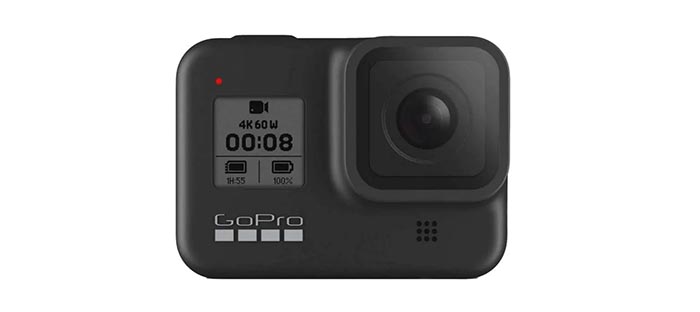
The action camera is synonymous with the GoPro, something which needs no introduction. Tiny, robust, and ready to be used with all kinds of accessories, they’re perfectly suited for recording extreme sports like wakeboarding, mountain biking and rock climbing.
FOR
- Tiny and robust
- Endless accessories for every type of situation
AGAINST
- Small sensor means grainy footage in low-light conditions (e.g. sports hall)
Recommended for: Sports and water sports where the camera operator will be participating in the sport (e.g. cycling, skiing, kayaking)
Mirrorless Cameras
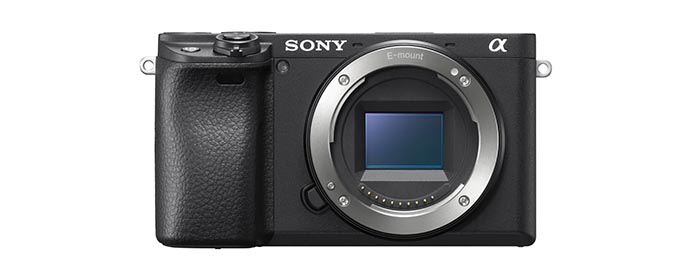
Mirrorless cameras are taking over the world. They’re slowly replacing DSLRs for photography and when it comes to video, they’re simply better. Because they have larger sensors than compact cameras and consumer camcorders, their image quality is noticeably better and they fare better in low-light conditions. They can also be paired with different interchangeable lenses to deal with every kind of situation, making them the most versatile kind of video recording equipment.
FOR
- Fantastic video quality
- Versatility – change lenses depending on what and where you’re filming
- Takes great stills, too
AGAINST
- Substantially more expensive and complicated than other options
Recommended for: Shooting cinematic footage of sports where the camera operator will record from a distance
DSLRs
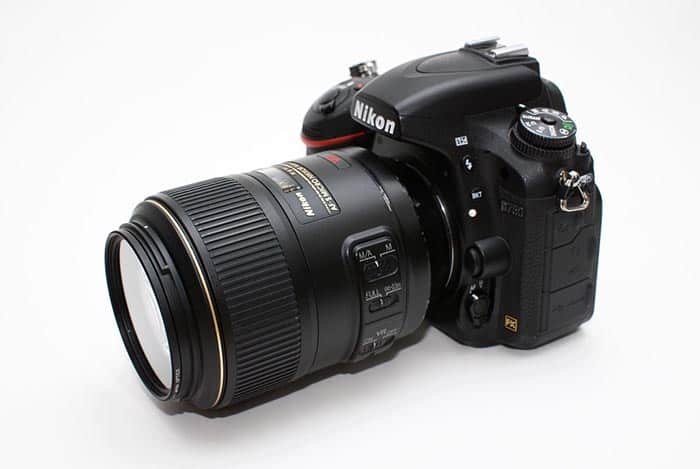
DSLRs are fantastic for taking photos but for technical reasons don’t perform as well as mirrorless cameras when it comes to shooting video. Cheaper DSLRs are usually limited to 1080p@30fps and their viewfinders get blocked by their mirror when recording. High-end ones like the Canon EOS 1D can take 4K@60fps footage, but you end up paying an unnecessary premium for the luxury. Lastly, they’re heavy and cumbersome compared to mirrorless options.
FOR
- Same pros as mirrorless cameras
AGAINST
- Simply better off going with a mirrorless camera these days, especially for video
Recommended for: Same things as mirrorless (above)
Professional Camcorders
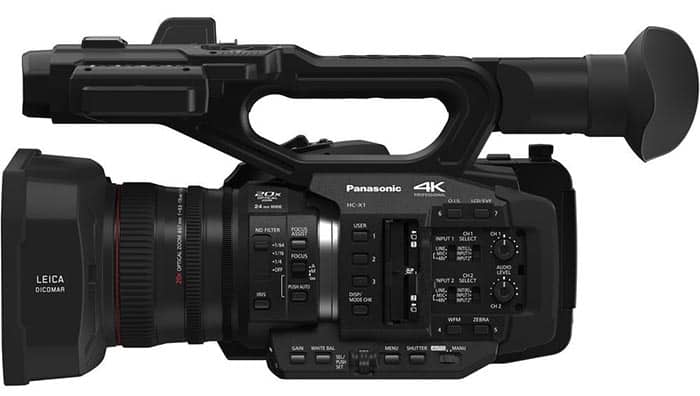
These are the best in the business but will cost you in the tens of thousands of dollars unless you’re okay with renting them. They are used by film crews and TV broadcasting studios and are by no means practical for the average home user. If you came looking for a professional camcorder comparison, this list isn’t for you!
FOR
- The best you can get
AGAINST
- Expensive and unnecessary for 99.9% of people simply wishing to record sports
Recommended for: TV broadcast style recordings
Now that we’ve covered the various types of camera you can take to your next sporting event, here is our list of recommendations:
Sony ZV-E10
- Compact size
- Class-leading AF tracking
- Articulating screen
- Livestreaming capability
- Rolling shutter while panning
- No 4K at 60 fps (only 30 fps)
While the ZV-E10 is a vlogger/video creator-focused mirrorless camera, its emphasis on video makes it adept at filming sports as well. It’s also one of the most compact APS-C cameras, which makes it easier to pack and take out on a whim.
Sony really pulled ahead in the mirrorless video market during the early days of the mirrorless revolution, and other major brands like Canon and Nikon have been playing catch up ever since. Superior autofocus has been part of that secret sauce and the ZV-E10 has an impressively fast, accurate, and intelligent AF system.
Compared to some of the more expensive mirrorless options that made this list like the Fujifilm X-S20, the ZV-E10 has a slightly more limited 30 fps frame rate at 4K resolution, although if you can settle for 1080p then you can record up to 120 fps. It also lacks IBIS (meaning stabilization will be handled in-lens or using a tripod or gimbal) and 10-bit recording which can lead to a smoother gradient of colors and less banding.
It’s definitely worth mentioning that this is significantly more user-friendly than your typical mirrorless camera. It was designed with today’s generation of content creators in mind and operation is streamlined. This will be a plus for many, but it does mean it does away with a viewfinder and some manual controls that more experienced videographers might be used to having.
Fujifilm X-S20
- Up to 6.2K at 30 fps video
- Brand new auto-focusing system with amazing auto subject detection
- Large capacity NP-W235 battery
- None
While there are plenty of great stills-and-video mirrorless cameras on the market, Fujifilm has made a name for itself by producing outstanding APS-C mirrorless cameras that truly excel when it comes to video.
The Fujifilm X-S10 and XT-4 are usually the first models that spring to mind, and the all-new X-S20 improves upon the X-S10 in several ways to make it the ultimate entry point for shooting videos using an interchangeable lens camera.
With the ability to shoot 4K60p or 6K30p 10-bit video (both of which the X-S10 lacked) with minimal rolling shutter and superb in-body image stabilization (IBIS), this APS-C camera was designed from the ground up with video recording in mind.
And compared to the Fujifilm X-T4, you get newer video features and vastly improved autofocus capabilities. Autofocus is perhaps one of the most important aspects of sports videography because it makes sure your subject stays in focus as they move around the frame.
The X-S20 autofocus algorithm inherits from the higher-end Fujifilm X-H2S and is matched only by certain Sony or Canon cameras.
The camera is also one of the best for capturing slow-motion footage thanks to its high-speed recording mode which can record full HD video at a whopping 240 frames per second. This enables you to slow footage by 10x, which is double that of the Fujifilm XT-3 and Sony A6600.
This is especially useful if you want to create instructional videos or you’re a coach who wants to record your subjects and carefully review their physical motion to provide better advice.
Along with its excellent APS-C sensor, you have access to a mature range of lens options, including plenty of great telephoto and wide-angle lenses, meaning you can find the perfect filming solution for every type of occasion.
DJI Pocket 2
- Pocket-sized
- Gimbal-stabilized footage out of the box
- Simple operation
- Not as rugged or waterproof as GoPro or Insta360 X3
The original DJI Osmo Pocket revolutionized cameras when it was released by being the first all-in-one camera-and-gimbal solution. In case you don’t know, a gimbal is a stabilizer that negates camera shake by making equal and opposite movements of unwanted movements.
DJI is simply the best in the business when it comes to gimbal stabilization, and the upgraded 64MP, 1/1.7-inch sensor (compared to the 1.2/3-inch sensor on the original Osmo Pocket) is larger and superior to the vast majority of smartphone camera sensors.
The fact that it can record at 4K resolution at up to 60fps makes it a great option for taking fast-paced sports videos. While 1080p is perfectly acceptable, 4K video is slowly but surely becoming the new standard and it also gives you more freedom in post-processing.
The camera has a 1-inch touchscreen to make sure you can frame your shot and preview the action you’re filming. You can also directly attach it to your iPhone or Android (using a Lightning/USB-C adapter) and use your smartphone’s screen as a viewfinder.
Aside from the improved sensor, the DJI Pocket 2 improves over its predecessor by featuring an improved microphone and a wider field of view. The improved mic is especially welcome, as the Osmo Pocket’s audio quality was perhaps its greatest shortcoming. Battery life remains the same as before, with the DJI Pocket 2 good for 140 minutes of continuous shooting at 1080p.
Unfortunately, the Pocket 2 is substantially more expensive than the original DJI Osmo Pocket, which is still available on the market. If you’re strapped for cash, the original model is still worth a look.
Overall, the Pocket 2 is the most convenient means to record high-quality and fully gimbal-stabilized footage. This makes it especially great if you’re filming while running up and down the sidelines or are constantly panning from side to side.
GoPro HERO11 Black
- 5.3K60 video and 2.7K240 video with 8x slow-motion
- Tons of accessories for every possible scenario
- Horizon locking and excellent image stabilization
- Some features locked behind paid GoPro membership
By definition, action cameras are designed to be capable of withstanding harsher conditions and filming fast-paced action, which makes them perfect for filming just about any sport.
Despite the action camera market being flooded with cheap knock-offs and some serious competition from the likes of the DJI and Insta360, the GoPro HERO 11 is still the king. You simply won’t find the same image quality and electronic image stabilization (EIS) performance offered by GoPro’s proprietory Hypersmooth 5.0 technology in any other action camera.
You can shoot all the way from 2.7K@240fps through to 5.3K@60fps, with 4K@120fps being perhaps the best video resolution and frame rate combination for your next highlight reel. In order to achieve these incredible figures, it uses the revolutionary GP2 processor which was first introduced with the GoPro HERO 10.
Whether it’s filming underwater, attaching it to your helmet, or filming in the dark with the brand new GoPro Light Mod—the GoPro HERO11 has a huge ecosystem of accessories that makes it possible to film in every possible situation you can think of.
GoPro also makes it incredibly easy to livestream directly at 1080p, which is especially great if you want a convenient way to stream your children’s next sporting event to your family and friends.
With all that said, the GoPro HERO11 Black isn’t for everyone. If you want to capture POV recordings of yourself mountain biking downhill or going underwater then it’s the best tool for the job. But if you’re simply looking to record a soccer game from the sidelines, then all that ruggedness and all those accessories aren’t going to make a difference.
While it is capable of producing stunning footage, the DJI Pocket 2 does a better job in low light conditions thanks to its larger sensor and also offers better stabilization thanks to mechanical stabilization vs software-based electronic image stabilization. Here’s a comparison video that shows the difference (albeit with the slightly older GoPro HERO10):
Panasonic HC-V785
- Simple to use
- 20x optical zoom
- Decent low light performance
- Average video quality that maxes out at 1080p
Although smartphones, GoPros, and mirrorless cameras have taken over, the good old camcorder still has its place in the market. They’re simple to operate and their substantial optical zoom capabilities make them a great option to take to your next football, soccer, or baseball game.
The Panasonic HC-V785 is a recent model but still a very traditional digital camcorder with a 1/2.3-inch BSI Sensor that suppresses noise in dim lighting. While it won’t film in 4K, the 1080p Full HD image quality is good with little to no noise distortion. Phone cameras and action cameras have by comparison very limited optical zooms compared to the HC-V785’s 20x optical zoom, meaning you’ll have no trouble getting a close-up of that special dribble or layup.
This is truly a set-and-forget type of camera that doesn’t require playing around with your smartphone or switching out lenses. The only thing you might want to bring is a tripod to keep things steady when you’re zooming in—the hybrid OIS is good but gets begins to get shaky upwards of 8x. You might want to consider getting the likes of a tripod, spare battery, and an SD card to make sure you’re suitably equipped before taking it outside.
Sony FDR-AX53
- Fantastic all-rounder
- Easy to use
- 20x optical zoom
- Less versatile than similarly priced mirrorless cameras
If you like the idea of going with a more traditional camcorder but want something at the prosumer level, look no further than this Sony offering.
It has a 1/2.5 Exmor R CMOS sensor that is capable of recording at 4K, with bigger pixels that mean far superior image quality and low-light sensitivity compared to cheaper 4K cameras. The ZEISS Vario-Sonnar T* wide angle lens can fit more things in frame and can zoom up to 20x.
The premium pricing doesn’t just improve the picture quality but gives you a solid built-in mic that captures the surrounding ambiance and reduces noise. Perfect for when you want to record all the cheers as the ball hits the back of the net.
It’s worth adding that this camcorder has a lower-spec counterpart, the Sony AX33. The AX33 is the best-selling semi-pro camcorder, but for shooting sports paying extra for the AX53 is most likely worth it. You get 20x optical zoom instead of 10x, as well as 1.6x bigger pixels for big improvements when recording at night or in other low-light situations.
Insta360 X3
- Don't have to worry about framing your shot, do it in post production
- Get several different filming angles from one recording
- Waterproof and rugged construction
- Trades image quality for image coverage
- Resolution drop in final edit
For many years the action camera market was fairly stale with GoPro and its main rival, the DJI Osmo Action series, being the only offerings that really mattered. But Insta360 got adrenaline junkies talking when they introduced their 360-degree cameras which are a whole new breed of action camera altogether.
These 360 cameras are armed with 180-degree forward and rear-facing lenses that are constantly capturing everything around them. The Insta360 X3 records 5.7K 360° video, meaning you won’t miss any action and can end up with some really interesting results by framing things the way you want in post.
Note that since the 5.7K footage is taken over a 360-degree sphere, the resulting footage you choose to include in the final cut will typically be closer to 1080p.
The X3 isn’t the typical video camera you’re used to, so whether or not it’s something that suits your needs will require some more research on your behalf. But if a 360° video camera is what you’re after, this is by far the best one out there, thanks to its great software, solid stabilization, and solid 1/2” 48 MP sensors which hold up in subpar lighting conditions. Not to mention, there’s hardly any competition in this relatively new space, so you don’t have much else to choose from.
Like the GoPro, this is built with extreme action in mind, meaning it’s got a rugged, fully waterproof body. It isn’t the camera you’d pick for recording team sports games that are played on a field or court, but more for recording POV footage when you’re mountain biking or snowboarding, for example.
Kimire Full HD 1080P Camcorder
- Cheap
- 3.0-inch LCD screen
- Comes with spare batteries
- No optical zoom
- Only 15fps at 1080p
Another traditional camcorder to make this list but this time in the ultra-budget range, this generic brand camcorder gets the job done at minimum cost.
The resulting output video footage is respectable, though it can struggle when filming under sub-optimal lighting conditions.
This is definitely a smart choice for those who want to record footage to review rather than with the purpose of publishing for viewing pleasure.
However, because it lacks optical zoom and only features 16x digital zoom, you might have difficulty getting a clear picture while zoomed in. As a fixed-focus camera, there’s also no autofocus or manual focus which can present focus issues depending on the distances you’re filming at.
Overall, it’s a good choice for those who aren’t looking for anything too fancy and don’t want to worry about potentially breaking an expensive piece of equipment. Note that there are hundreds of other cheap budget white-labeled cams like this which have virtually identical components under the hood so it’s worth shopping around for the best deal at any given time.
Panasonic G85
- Rugged splashproof and dustproof design
- Portable and ergonomic
- Not the best AF system
- Smaller Four thirds sensor compared to APS-C and full-frame cameras
Another mirrorless camera to make the list, the Panasonic DMC-G85 is one of the cheaper mirrorless bodies capable of capturing 4K/30p, 100 Mbps footage. Its Four Thirds sensor provides superior image quality and low-light shooting performance compared to something you’d find on a camcorder, smartphone, or action camera.
The G85 is considered one of the best budget mirrorless cameras for video among amateur filmmakers. It won’t make much financial sense to purchase one for the sake of recording sports clips to share on your Facebook feed. Still, those filming sports events or aspiring YouTubers will appreciate the leap in video quality.
Despite being a slightly older 2016 model, the G85 remains a relevant camera today because of its rugged enclosure and 5-axis in-body image stabilization. The weather-sealed splashproof and dustproof body means it can withstand the elements when filming outdoor sports in unfavorable weather.
Unfortunately, it doesn’t quite match the other mirrorless cameras mentioned in this buyer’s guide when it comes to video quality because it has a slightly more basic AF system compared to the ones found on more recent midrange cameras like the Fujifilm X-S20 or Canon EOS R7.
Sports Video Camera Buying Tips
Frames Per Second VS 4K Resolution
When it comes to recording sports, 60fps better captures the motion and makes everything appear more fluid. 30fps is perfectly acceptable (it is what you see when you watch live sporting broadcasts on TV) but 60 fps also has the advantage of allowing you to produce slicker slow-motion effects in post-processing.
Right now, even some high-end cameras and camcorders do not offer 4K at 60fps. The latest GoPros and iPhone can do it but no one is claiming they are better cameras than the Sony FDR-AX53 4K camcorder, for example.
So given that, in most cases you’re going to end up choosing between 1080p@60fps or 4K@30fps. I’d recommend 1080p@60fps for shooting sports, because a higher frame rate is more important than image quality. If you’re planning to publish video to video platforms like YouTube or Vimeo, you should upscale the 1080p source to 4K beforehand as it provides numerous image quality benefits.
How Can I Livestream The Action?
These days it’s becoming quite popular to live-stream events. This could be to your family who couldn’t make that unmissable little league game or your audience who want to watch you play a pick-up game of basketball.
Unfortunately, trying to livestream the action will add a new layer of complexity. Not only do you have to worry about the internet bandwidth and the battery drain, but also the fact that you need to process the camera feed into a compressed, streamable format.
An iPhone or Android, as well as GoPro action cam, can do this natively – just don’t expect amazing footage. This is because they feature a lot of processing power inside that can be used to convert footage to a streamable format such as the RMTP format.
The DJI Pocket 2 can live stream, but you’ll need to purchase the Pocket 2 Do-It-All handle to unlock this feature.
With other systems it’s a bit more hit and miss. High-end cameras sometimes require another piece of expensive equipment to make it all possible.
Do I Need An Action Camera?
By design, action cameras like the GoPro are perfect when the cameraperson isn’t simply filming from the sidelines. They can be worn or be attached to the end of a monopod, be controlled using voice controls and take a good beating.
Standard cameras simply don’t offer that flexibility. If the GoPro is out of your budget, check out my recommended under $100 action cameras.
However, if you are filming from the sidelines, a GoPro or similar action camera is a needlessly expensive option. A good phone camera will do the job just as well, while a mirrorless camera or quality camcorder will produce better looking videos.
Sport-specific Tips
- Basketball/Volleyball/Hockey – Indoor sports all have one thing in common: low-light. The larger sensor found in a mirrorless camera or DSLR camera delivers better low light performance and will help when filming in those often dimly-lit sports halls.
- Swimming/Water Polo – In addition to being indoors, there is a small risk of getting equipment wet if you’re near the action. Keep a lookout for ‘splashproof’ or ‘weather-sealed’ cameras (most cameras are).
- Golf – This isn’t any different to filming any other sport, but if you want to follow the ball fly across the sky like they do on TV, you’ll need some special equipment and camera operating skills.
- Baseball/Football/Soccer – These outdoor sports can present optimal recording conditions, but if you’re recording from the stands you’ll want a camcorder with a high optical zoom or a mirrorless camera with a zoom lens.
Recommended Accessories
- A lightweight tripod should be used if you plan to film from a set spot
- If you filming on the move, a gimbal stabilizer can drastically reduce unwanted shake
- An external microphone can dramatically improve audio quality
- Extra memory cards (if your camera uses external memory) and spare batteries or a powerbank
- A Pop up LCD hood to block out the light and see the display under the sun
- A good camera/camcorder case, screen protector and rain cover
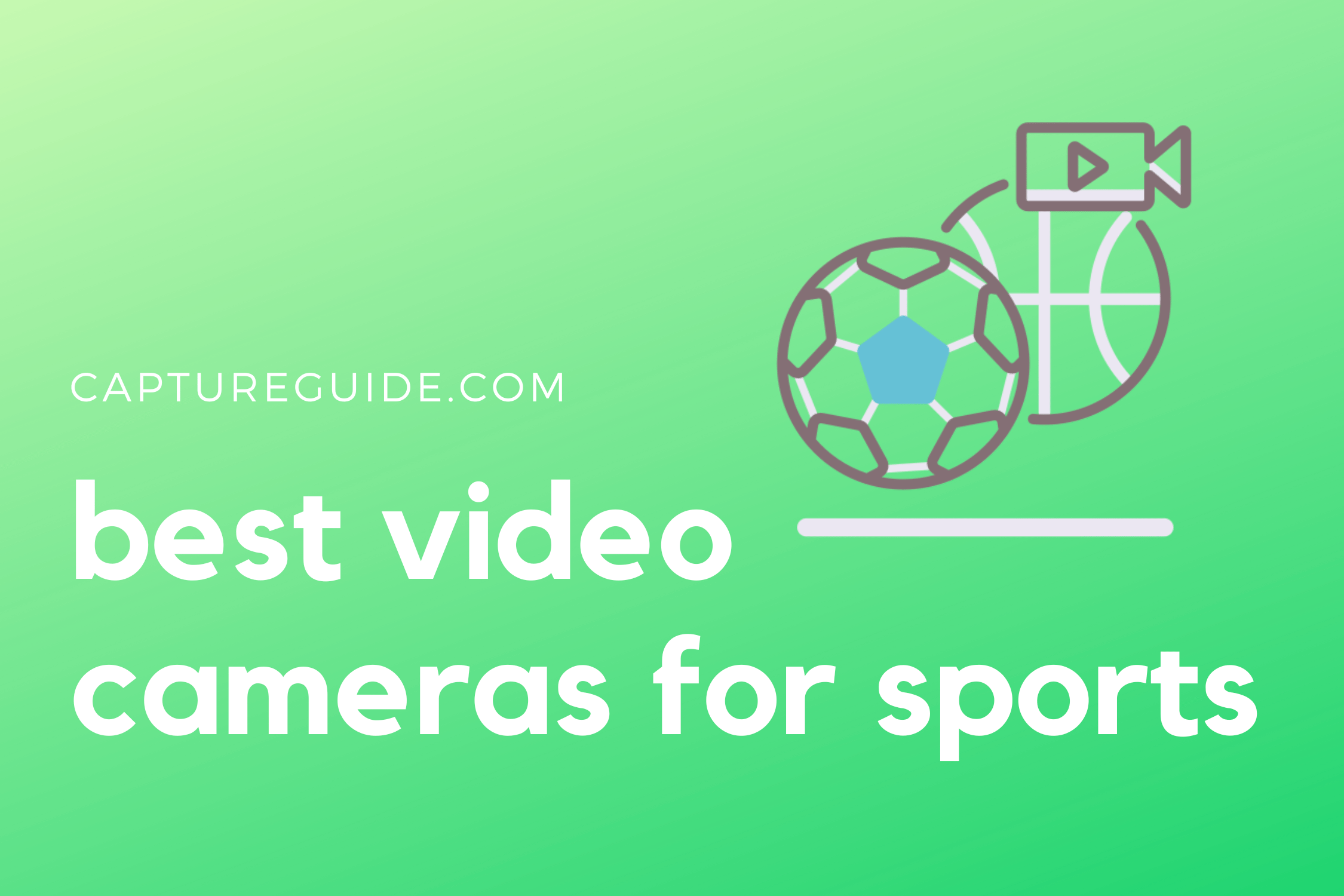
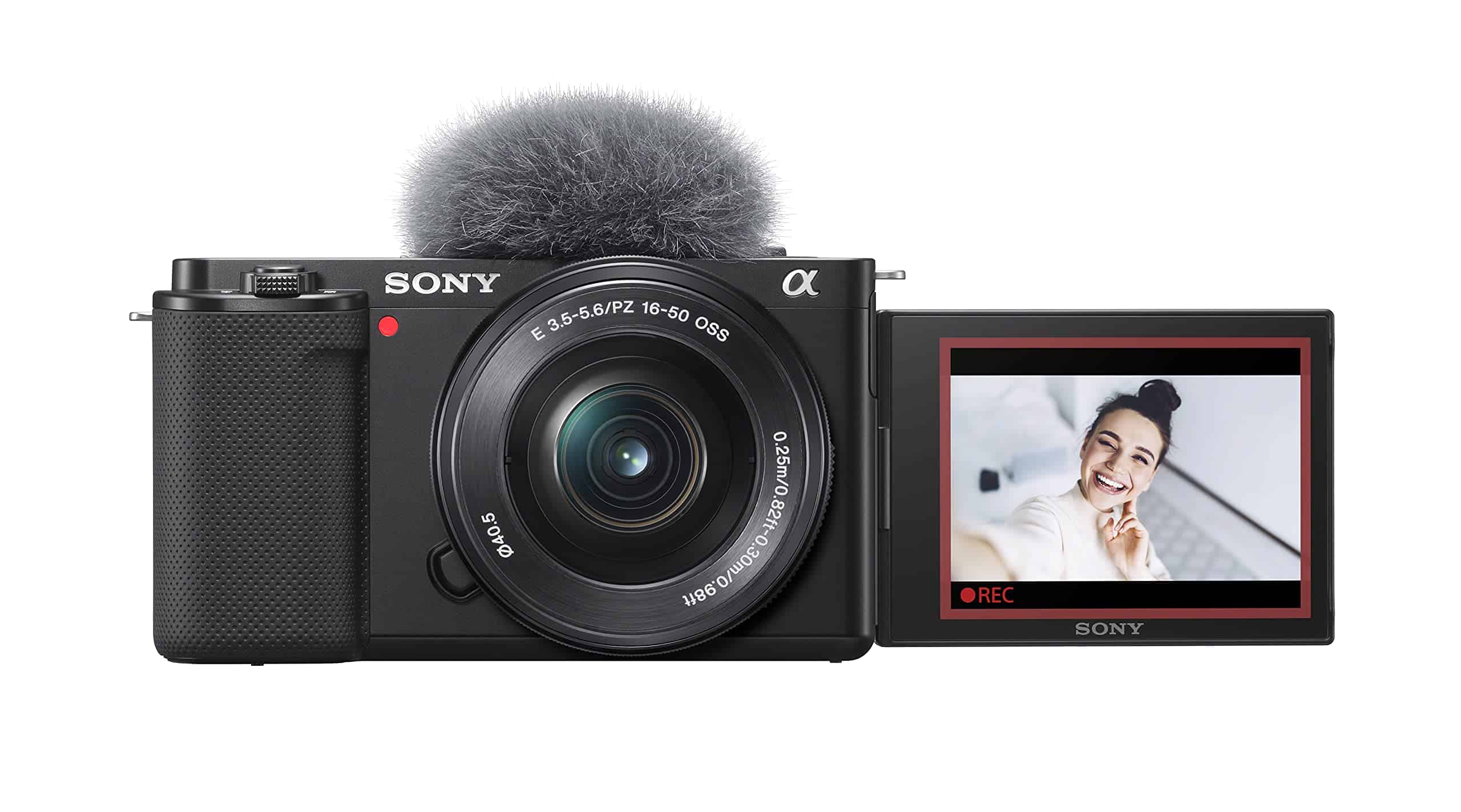
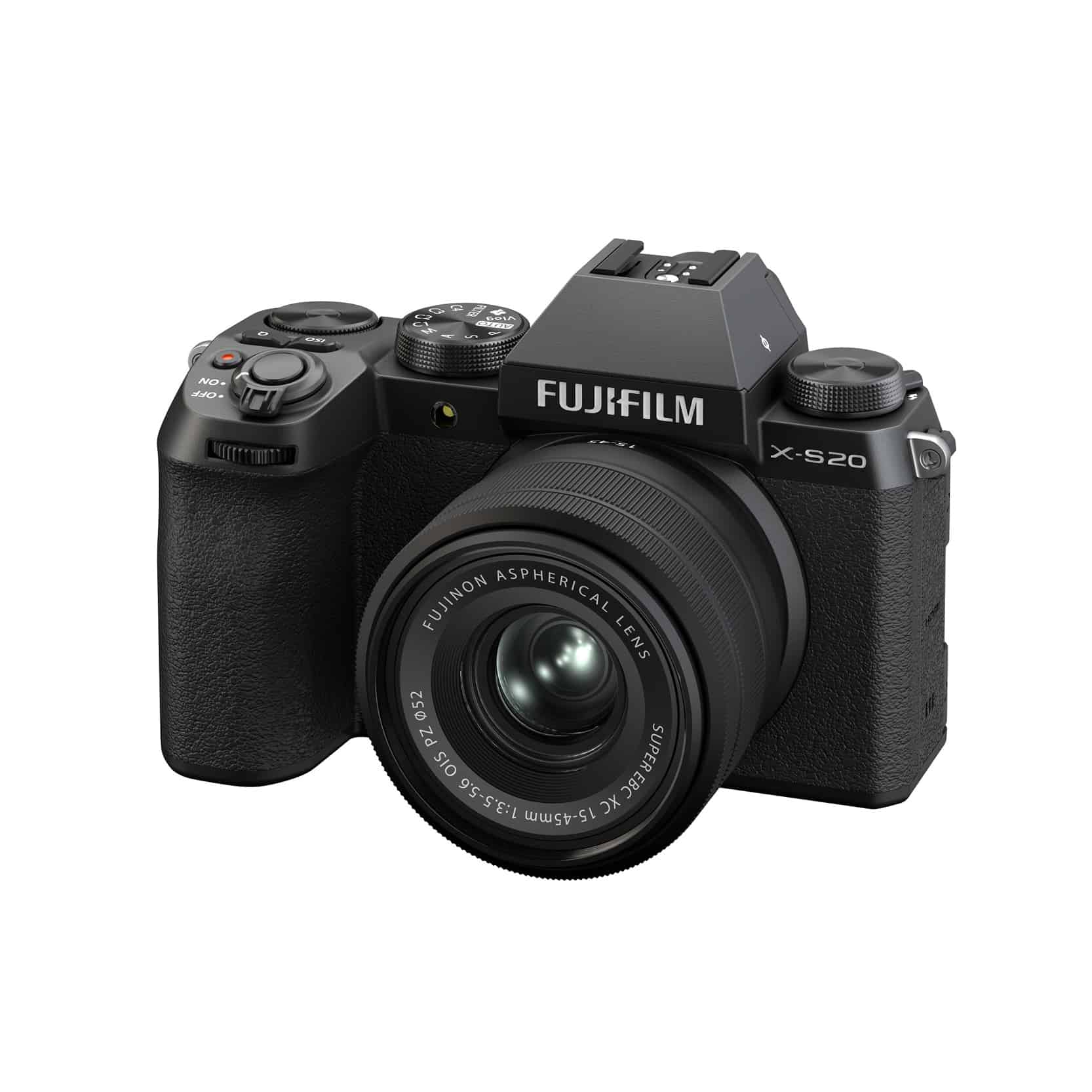
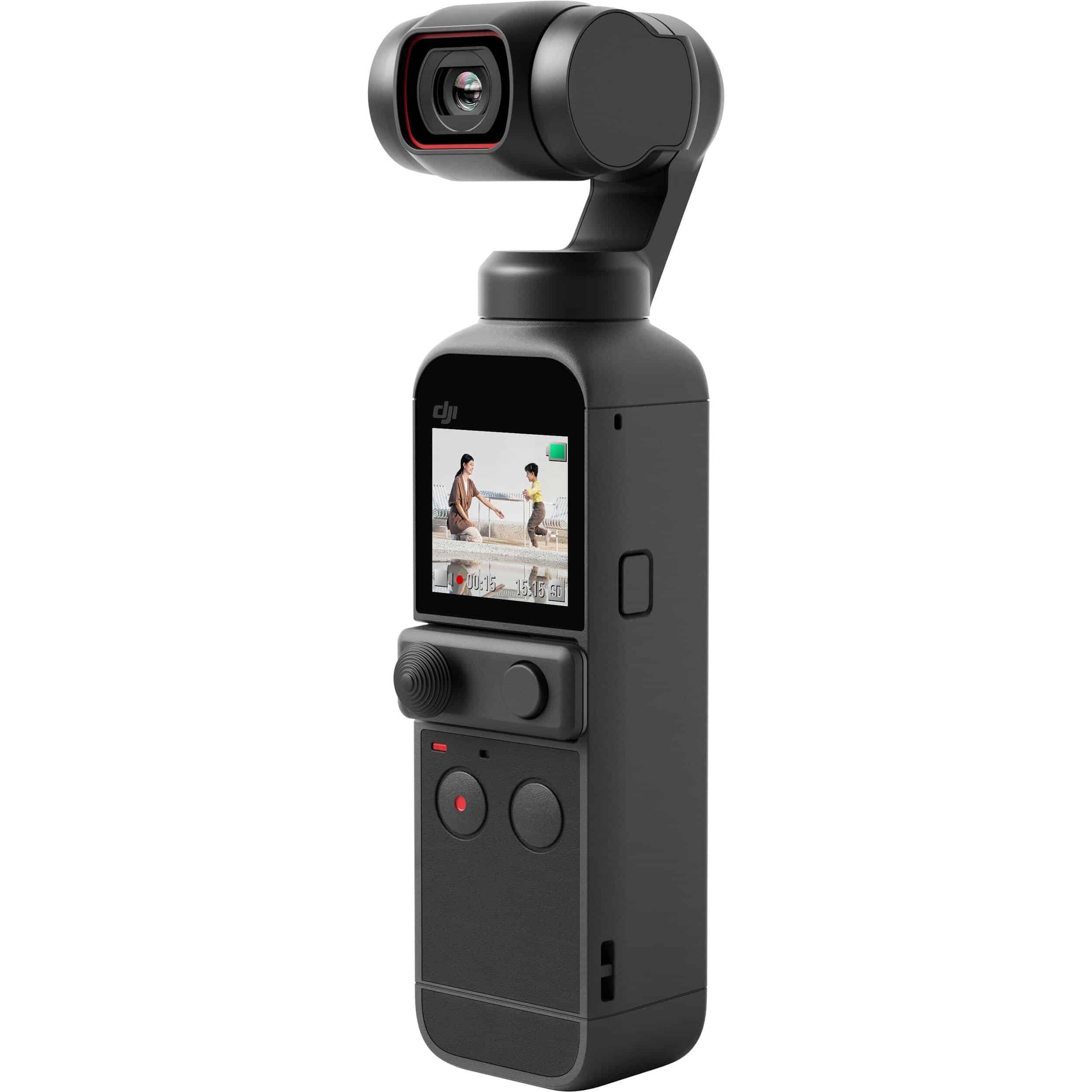
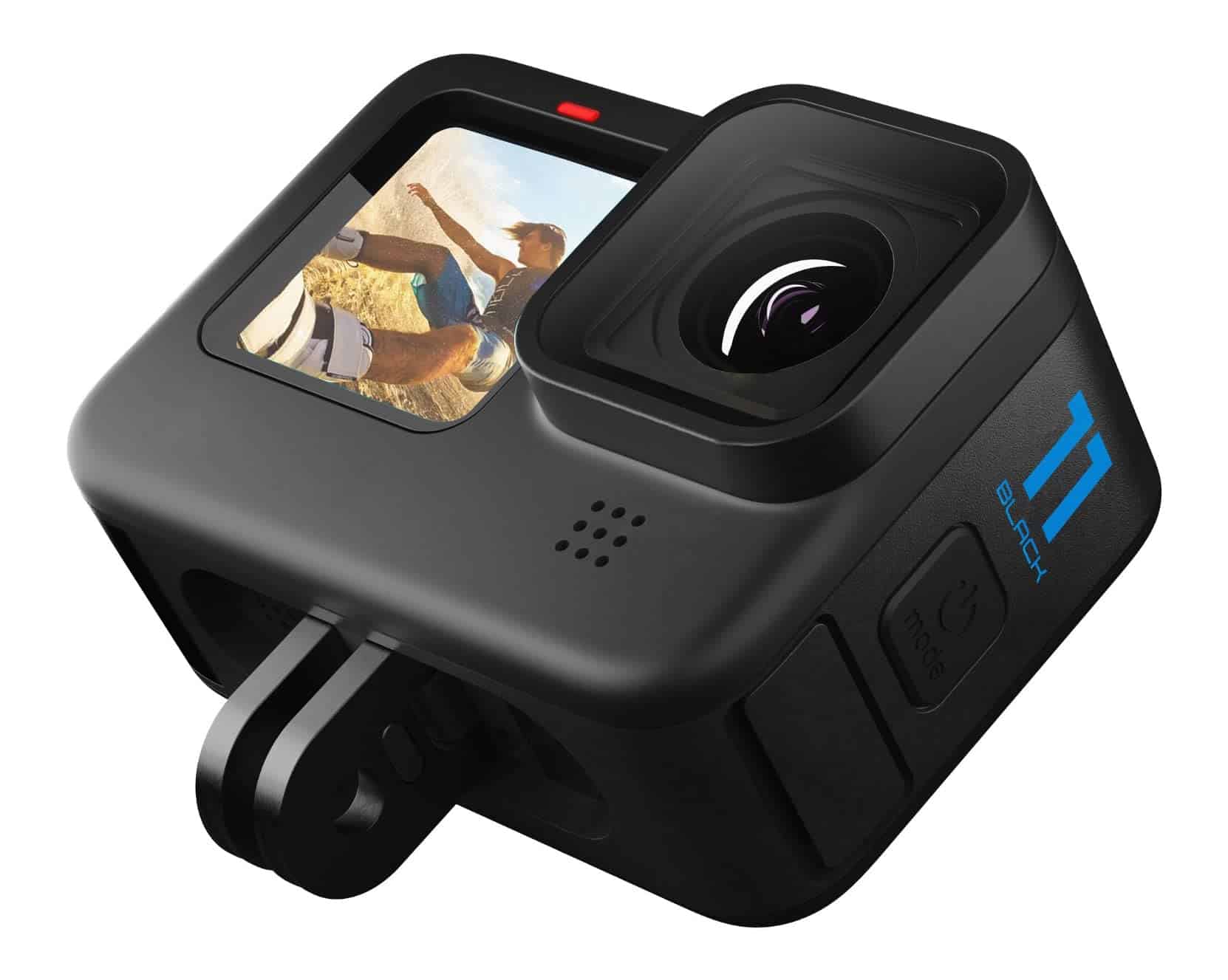
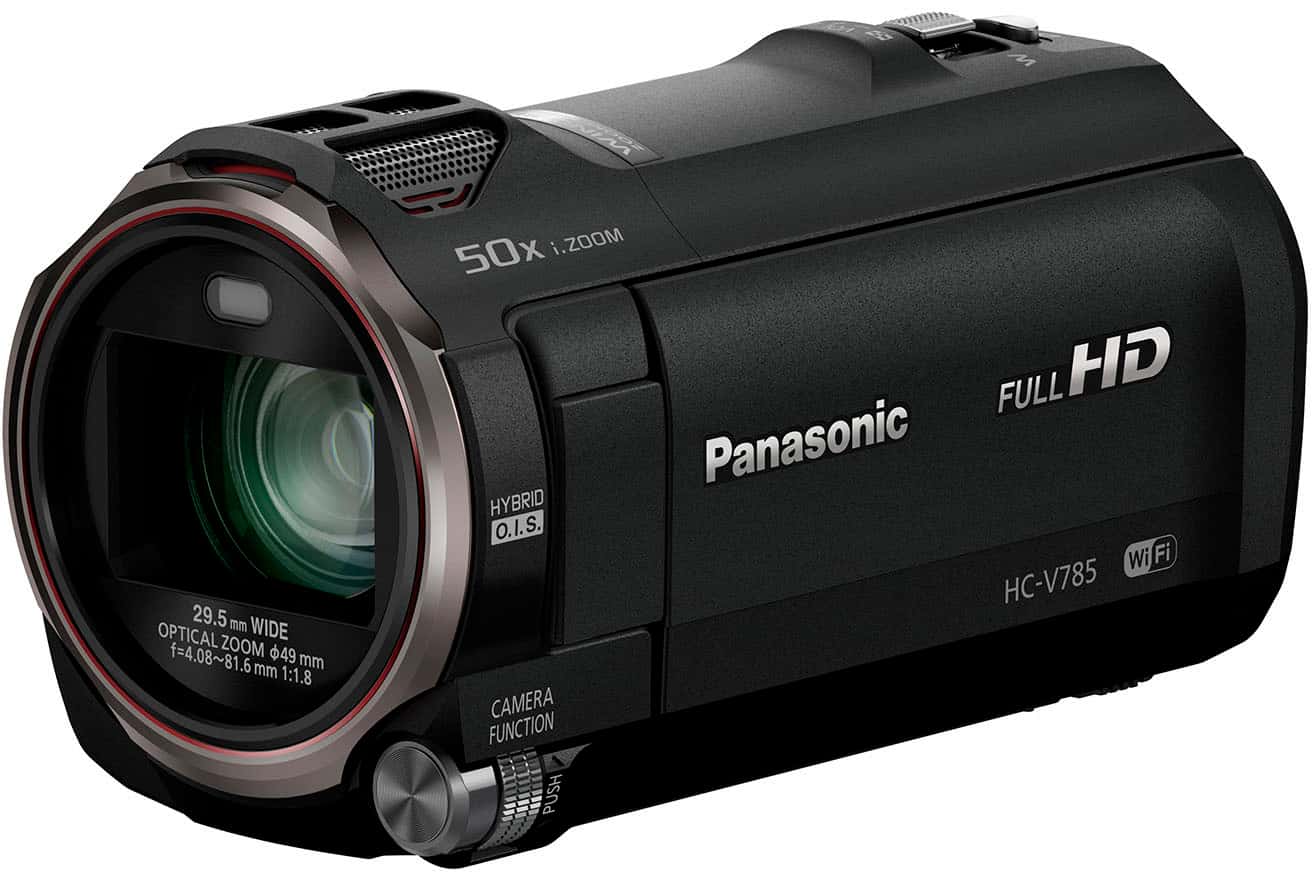
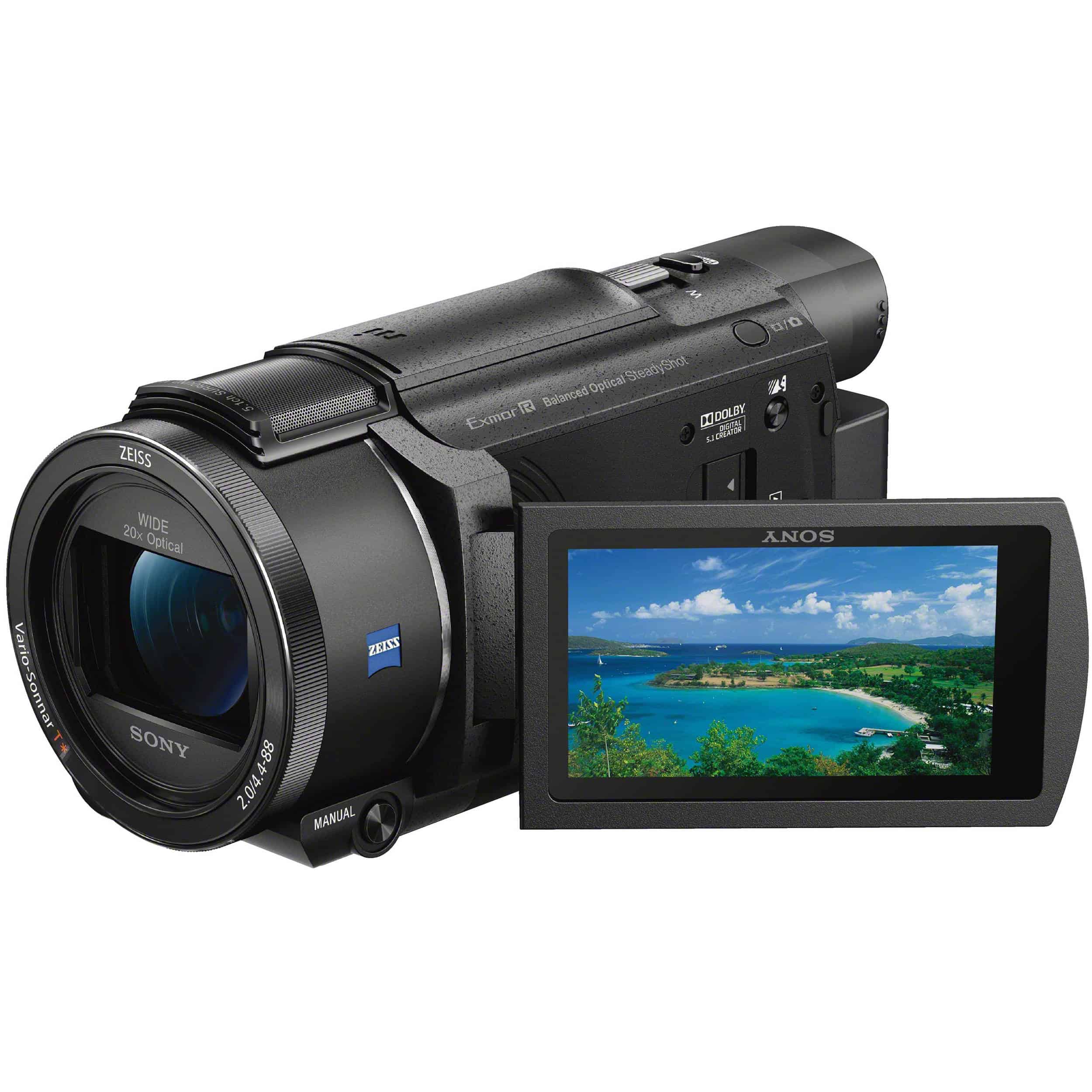
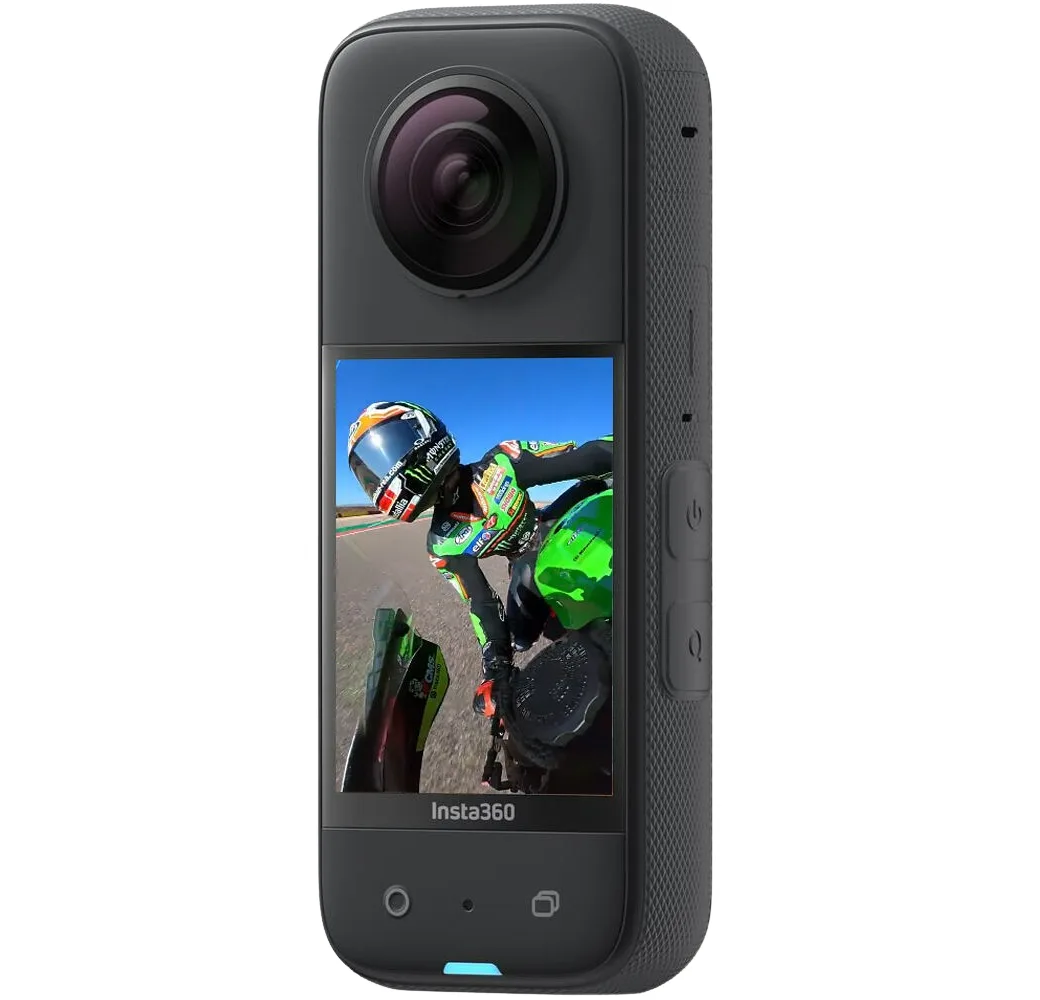
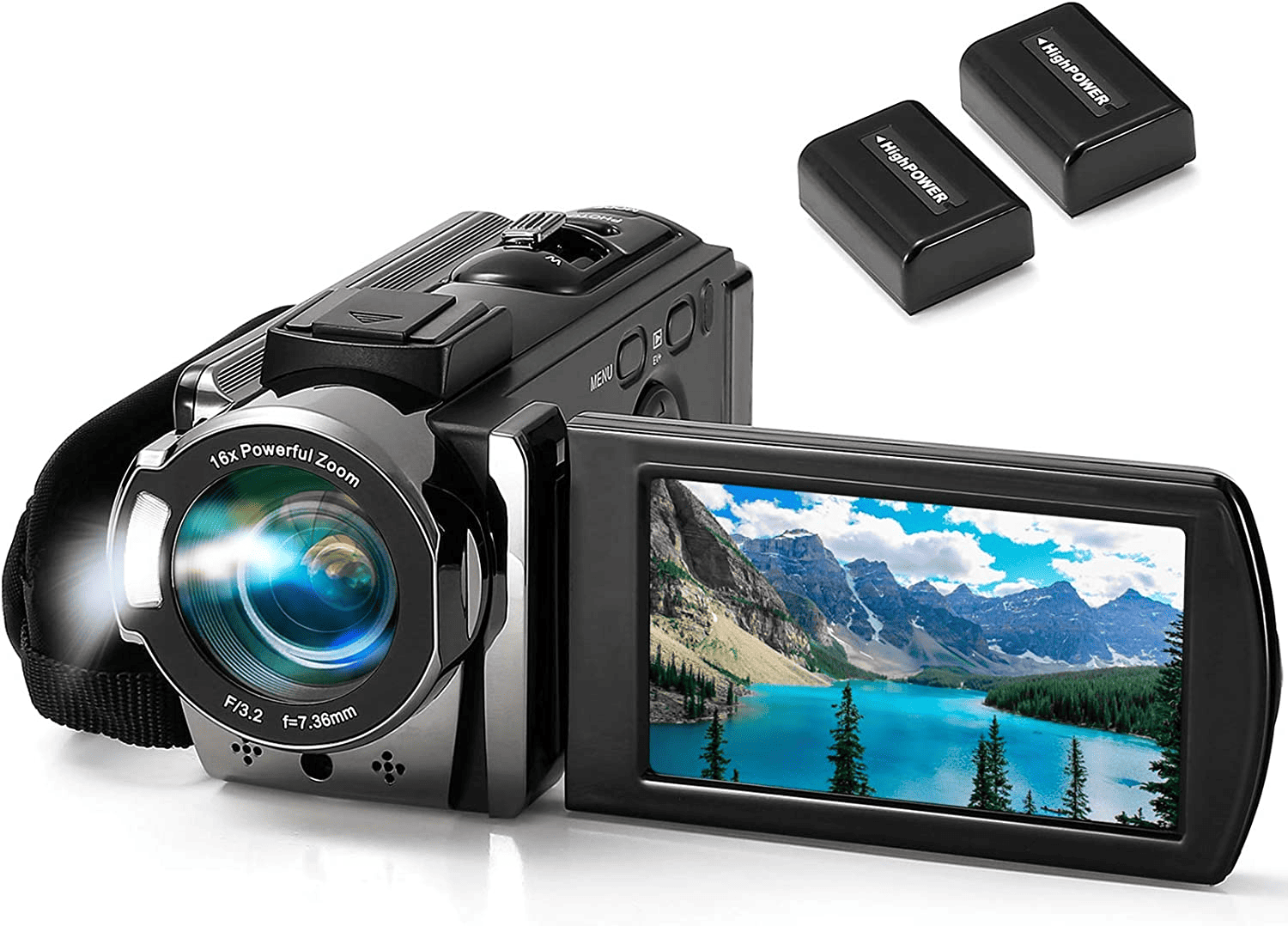
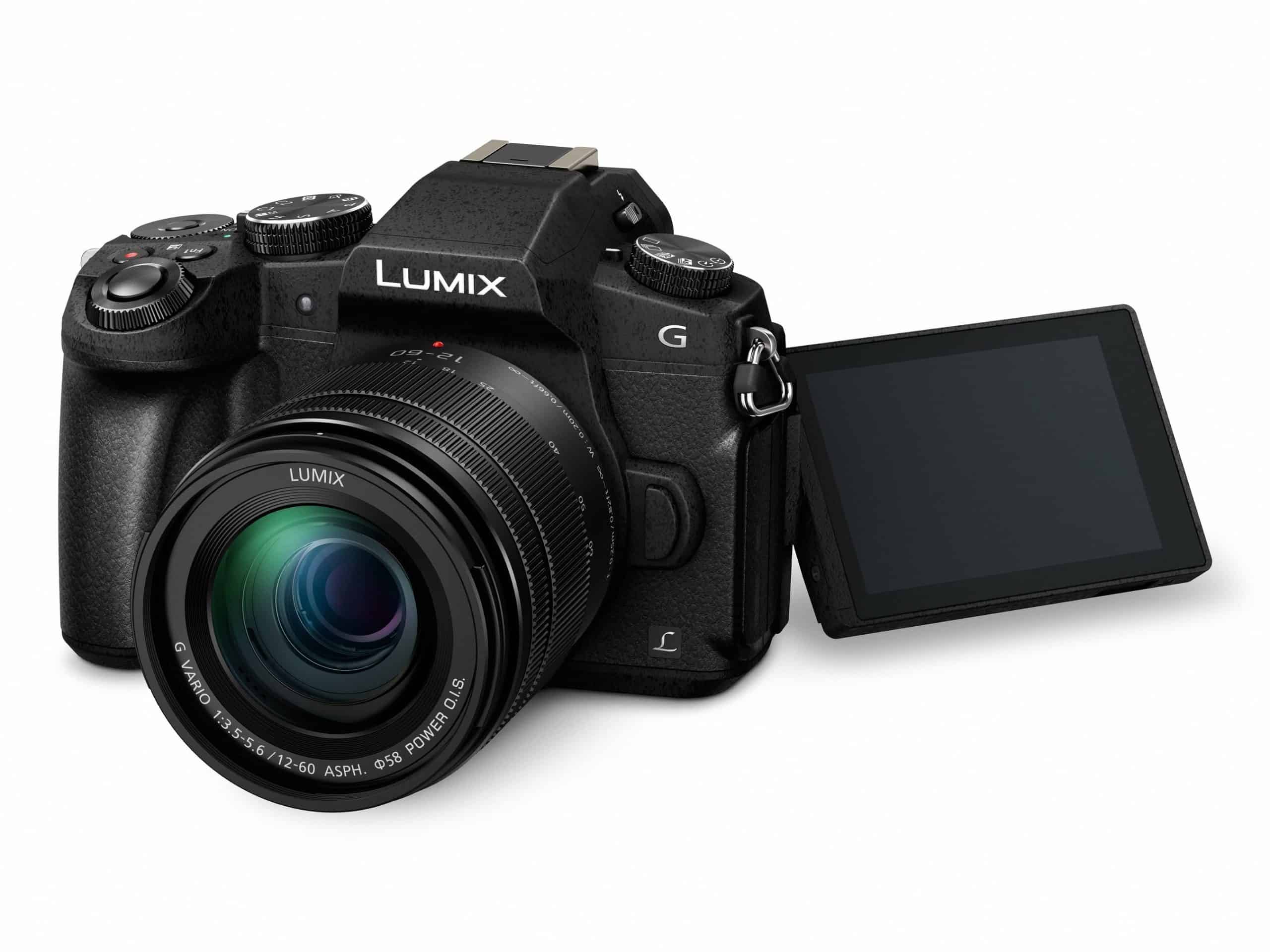
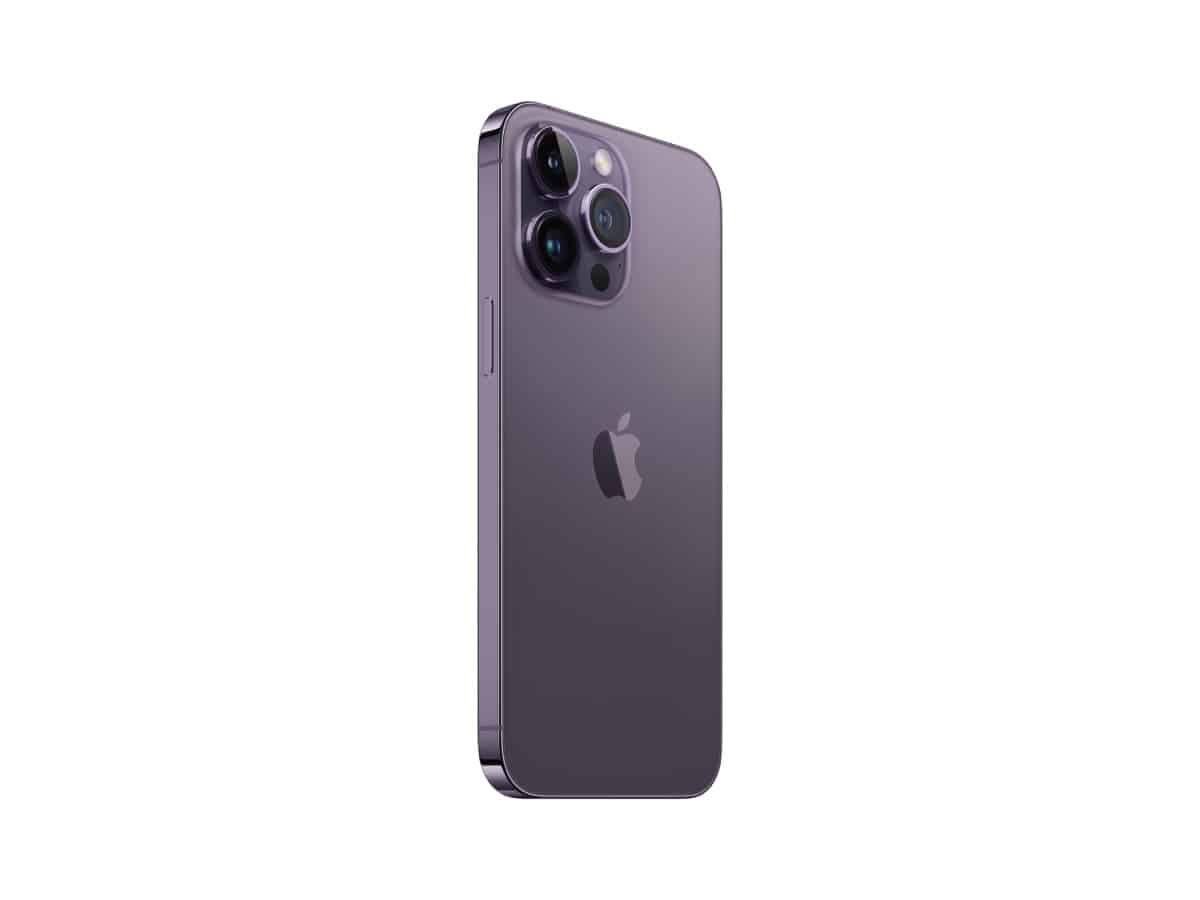
I’m simply looking for a video camera to record high school football games. Terms are overwhelming. Would any of these in this article work for that?
Yes, a camcorder like the Sony FDR-AX53 mentioned would be the best. They’re simple to operate, versatile and have a generous zoom. But it is difficult to give you the best answer without knowing specifics, e.g. budget, recording from sidelines or up high, able to set up a tripod or not, recording at night etc.
Mind giving a recommendation for a few common specifics?
On a tripod from the sideline and or up in the press box/top row of the stands.
To be kind of out of the box, any recommendations for ones able to be mounted on a drone, or prebuilt combos that could be used to give an overhead view/angle of a play.
Also which small model, I assume a go pro could be easily mounted to a players helmet or front of pads, to review what they saw perspective wise.
Thank you so much!
Hi Greg. For a tripod from the sideline and or up in the press box, a camcorder with a strong optical zoom and good stabilization is ideal. The Sony FDR-AX53, as just mentioned, would be a good starting point that works out of the box. If you’re looking for something more professional, more expensive camcorders like the Panasonic HC-X2, or perhaps a mirrorless camera and a long zoom lens would be where I’d look next.
For aerial videos, you’d want to look at popular drones like the DJI Mavic series. These kind of drones all feature built-in cameras as they’re basically built for recording video and you’d get nice results. Just note that you’d need to learn how to pilot a drone which can take some time.
Finally, for mounting the camera to a player for POV footage, a GoPro or similar is the way to go. A popular YouTube soccer player (https://www.youtube.com/@jfootballtv/) uses the tiny Insta360 Go 3 and the magnetic neck pendant with fantastic results. With football, you’d need to be more careful about placement but the small nature of the Go 3 could offer you more placement flexibility.
Hope this helps. Since I get a lot of questions I’m actually planning to write an article more specific to how to record in various situations. Stay tuned!